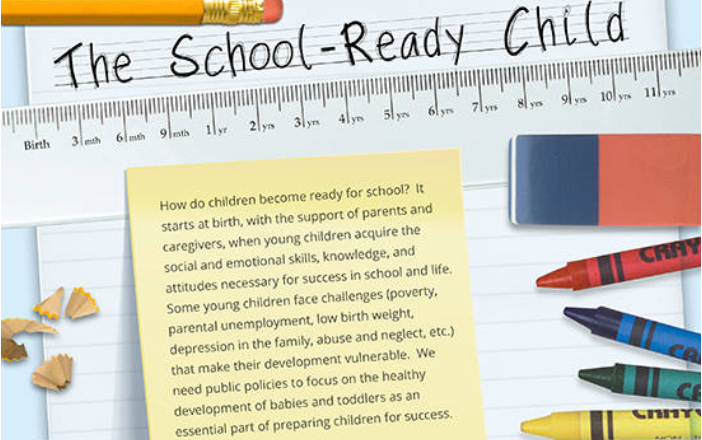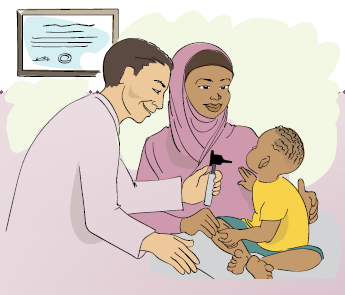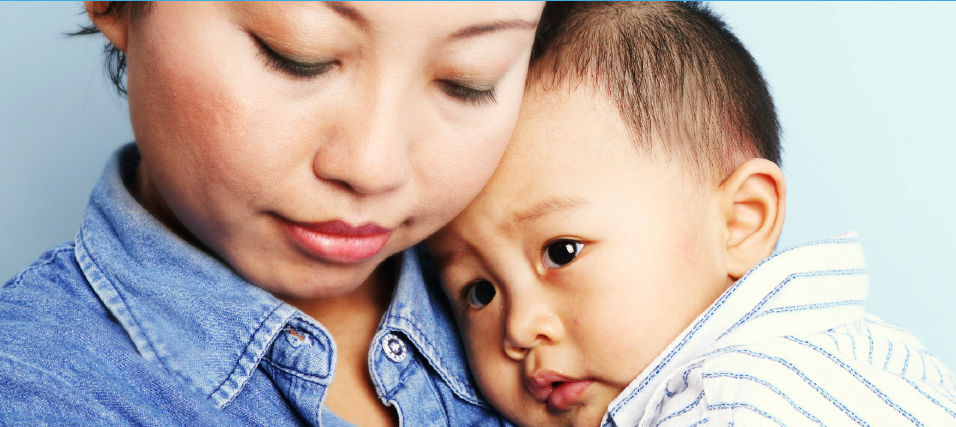School Readiness Infographic
How do children become ready for school? Learn how school readiness begins at birth.

Transcript of infographic:
The School-Ready Child
How do children become ready for school? It starts at birth, with the support of parents and caregivers, when young children acquire the social and emotional skills, knowledge, and attitudes necessary for success in school and life. Some young children face challenges (poverty, parental unemployment, low birth weight, depression in the family, abuse and neglect, etc.) that make their development vulnerable. We need public policies to focus on the healthy development of babies and toddlers as an essential part of preparing children for success.
- It’s all about relationships
Babies know their needs will be met when they have healthy relationships with at least one caring adult. That adult may be a parent, a relative, or another caregiver. More than 6 million children under age 3 spend some or all of their day being cared for by someone other than their parents.
- Everyday experiences shape early learning
For babies, everyday experiences provide opportunities to learn how to operate in the world. In fact, children’s academic successes at ages 9 and 10 can be attributed to the amount of words and talk they hear from birth through age 3.
- Emotions
Emotions play a big role in a young child’s capacity to learn. Emotions are stored at the core of the brain’s architecture, surrounded and integrated with higher-level brain functioning.
- The importance of play
Through play, babies and toddlers explore and make sense of the world around them. Play promotes a love for learning by stimulating and supporting children in their development of skills, concepts, language, communication, and concentration.
- What a school-ready child looks like
Confident, empathetic, curious, collaborative, cooperative, problem-solver, creative, self-controlled, communicative, persistent
Sources
Betty Hart and Todd R. Risley, Meaningful Differences in the Everyday Experience of Young American Children, Baltimore, MD; Paul H. Brookes, 1995.
Sandra Peterson, “Approaches to Learning: Supporting Brain Development for School Success.” Zero to Three Journal 22, no. 1 (2012): 24-27.
Stephanie Powers, “From Research to Practice: Strategies for Promoting School Readiness in Programs Serving Infants & Toddlers.” Journal of ZERO TO THREE: National Center for Infants, Toddlers and Families, 33, no. 1 (2012): 37-42.
United States Census Bureau. Who’s minding the kids? Child care arrangements. 2011.




